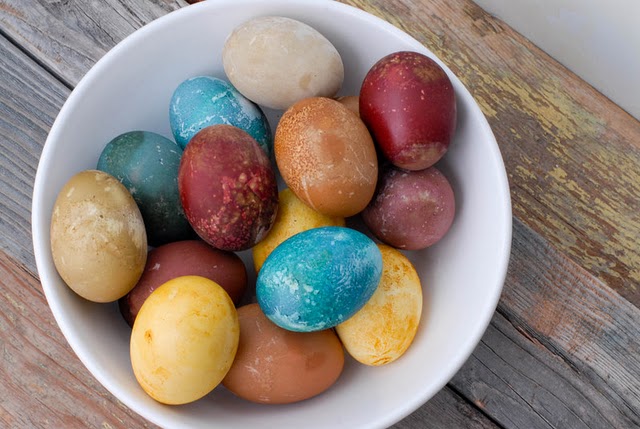Here in Africa dying Easter eggs is… well, not all the rage. Which means that there are no egg dying supplies to choose from. Over the years we have had to get creative about dying eggs, using food coloring or just decorating them with markers (I know, probably toxic!) or just blending in with our South African friends and well, not doing the dying thing (and rather eating chocolate eggs instead, not a bad trade actually!).
Recently I ran across this blog post about how to make natural Easter egg dyes. I think it’s great for those of us in other parts of the world who want to keep their own childhood traditions alive, but I am sure it’s also a much healthier option to the dyes bought in the store. Plus, I think the colors are very pretty. I love the muted tones the natural dyes leave behind.

So, if you haven’t already dyed your eggs this year, check out Boulder Locavore’s natural dye recipes and give it a whirl. You won’t believe that red cabbage makes a blue egg coloring! I can’t wait to try this out. Better HOP to it, not much time left!
Love,
Kristy
image Boulder Locavore


Hi Kristy! I’m so flattered you enjoyed my natural egg dye blog post enough to share it with your readers! Thanks for letting me know! It is such a great way to dye eggs and to experiment. Wish I would have tried it sooner! Happy Easter! Toni (BoulderLocavore)
cool :) nice idea
Betty Bake
I was shocked to learn recently that people don’t dye Easter eggs here. Yesterday I had to explain the whole process to my boyfriend – he’d never heard of it before. Chocolate eggs, while yummy, don’t seem half as fun. Glad you found a way to make it happen for your family (without toxic markers).
We literally just finished ours using a $0.99 package from Target. Now I wish I’d done this. I think you are BEAUTIFUL! Quiz: why/when/where did the tradition of easter egg coloring begin?
Danielle, I have no clue. Do you know? Might have to google that…